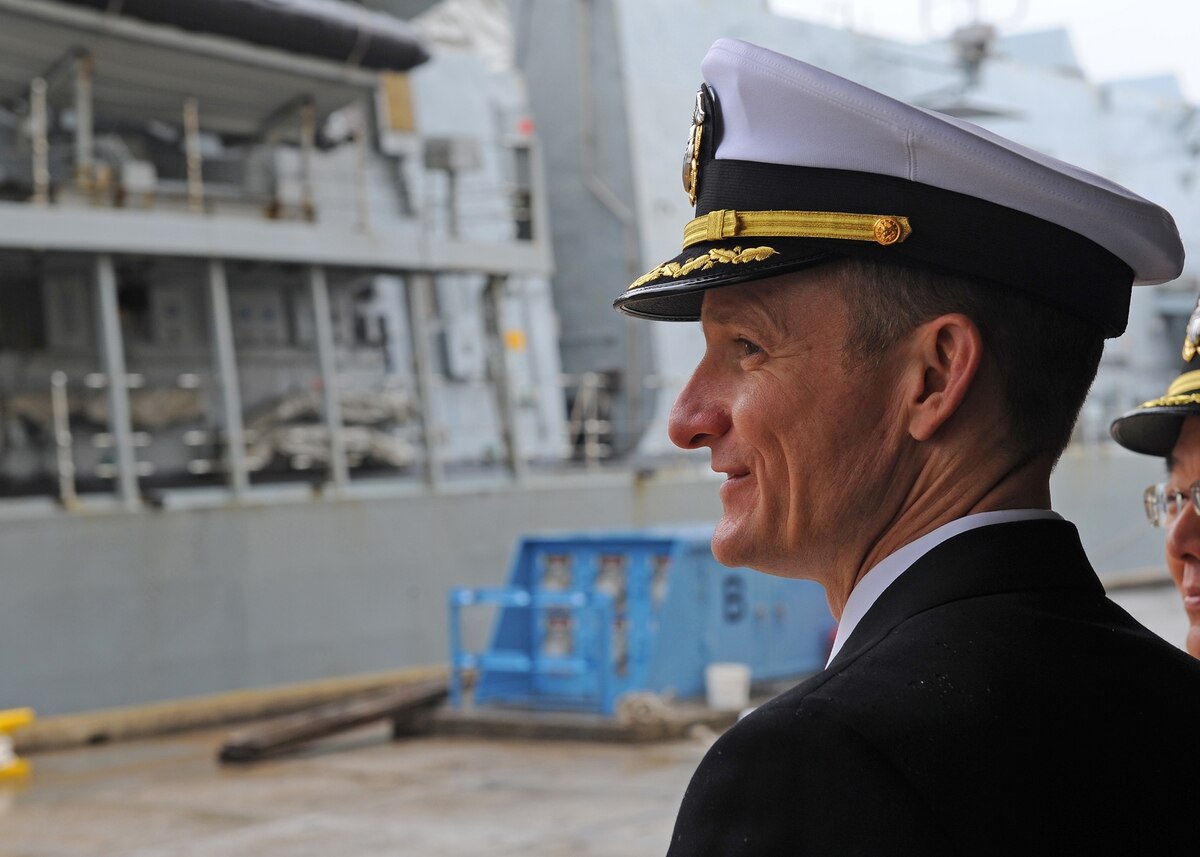
THE PENTAGON — Capt. Brett Crozier, who commanded USS Theodore Roosevelt (CVN-71) until April, will not be reinstated to lead the ship, will not be eligible for future command and faces additional administrative punishment that will be overseen by U.S. Pacific Fleet Commander Adm. John Aquilino, the Navy announced today.
Crozier was removed from the carrier after a March 30 memo he wrote to Navy leadership warning of the consequences of an outbreak of COVID-19 on the carrier was leaked to the press.
“We are not at war. Sailors do not need to die. If we do not act now, we are failing to properly take care of our most trusted asset – our sailors,” he wrote in the letter that was leaked to The San Francisco Chronicle. On April 2, Crozier was removed from his command on orders from then-Acting Secretary of the Navy Thomas Modly for “extremely poor judgment.”
Chief of Naval Operations Adm. Mike Gilday told reporters that Crozier’s removal was not due to the memo – which is why Modly initially fired him, and the crew’s public rally around their former commander led to Modly resigning shortly afterwards – but rather Crozier’s removal was justified based on his performance after the initial outbreak occurred on the carrier.
Additionally, the promotion of Rear Adm. Stuart Baker, who served as the TR carrier strike group commander at the time of the outbreak, to a two-star admiral is on hold pending further investigation, Gilday told reporters on Friday afternoon. Baker led the TR Carrier Strike Group until earlier this month, when he turned over command and was headed to a new job at U.S. Indo-Pacific Command.
“After conducting an initial investigation, the much broader, deeper investigation that we conducted in the weeks following that had a much deeper scope, it is my belief that both Rear Adm. Baker and Capt. Crozier fell well short of what we expect of those in command. Had I known then what I know today, I would have not made that recommendation to reinstate Capt. Crozier,” Gilday told reporters, referencing a late April recommendation he made to Defense Secretary Mark Esper based on the initial investigation. Esper, instead of signing off on the recommendation, asked for a deeper look into the circumstances surrounding the outbreak and the Navy chain of command’s response to it.
“They did not effectively carry out our guidelines to prevent spread of the virus. They were slow egressing sailors off the ship, and they failed to move sailors to available safer environments quickly. Additionally, Capt. Crozier exercised questionable judgment when he released sailors from quarantine on the ship, which put his crew at higher risk and may have increased the spread of the virus on Theodore Roosevelt. When obstacles arose, both failed to tackle the problem head-on and to take charge in a number of instances. They placed crew comfort in front of crew safety,” Gilday said.
Vietnam, Transit to Guam
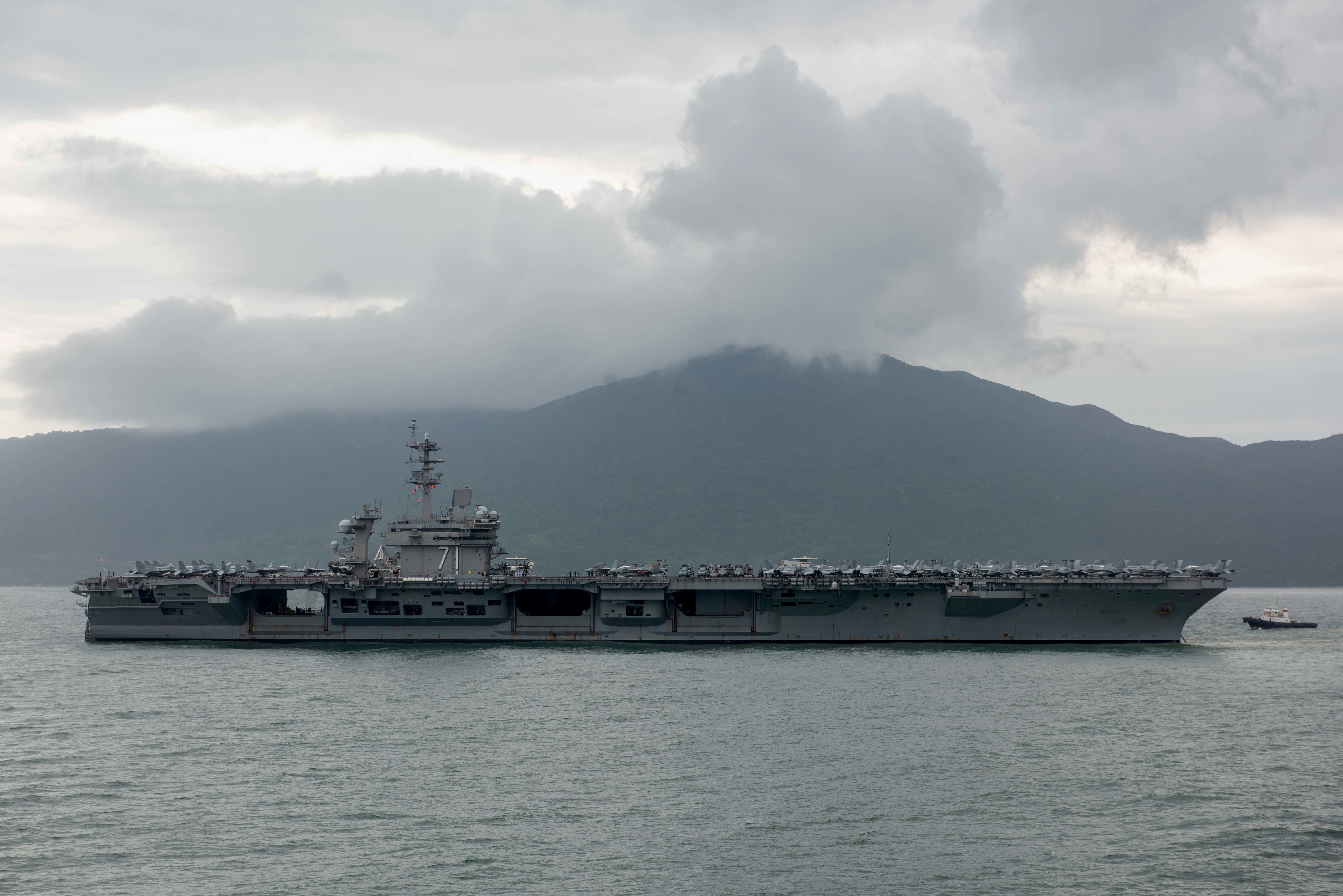
The scope of the investigation, led by then-Vice Chief of Naval Operations Adm. Robert Burke, was to assess if the carrier’s early March port visit to Vietnam was ill-advised, whether Crozier and the leaders on TR did enough to contain the virus while underway, and how the carrier performed at containing the outbreak once the ship pulled into Naval Base Guam.
Burke determined that, given the information available at the time, the port visit of TR and guided-missile cruiser USS Bunker Hill (CG-52) was acceptable under the both the State Department guidance as well as Vietnam’s low level of infection at the time.
“While it is likely that COVID-19 was introduced to the Theodore Roosevelt as a result of this port visit, the decision-making prior to and during the visit was reasonable based on the rationale for the visit and the information known at the time,” reads the report.
Based on the investigation, leadership on the carrier was first made aware of a risk of a COVID-19 infection to the crew on March 8.
“On March 8, the Vietnamese Government notified CSG-9 that sailors may have been exposed to COVID-19 during a stay at the Vanda Hotel in Da Nang, because two British citizens who had been guests of that hotel had tested positive for COVID-19,” reads the report.
“TR leadership quickly identified the location of 37 sailors known to have stayed at the hotel. … Later that day, two additional sailors reported to TR medical staff that they had also visited the hotel. These two sailors were not tested, but were quarantined on TR. All 39 sailors remained in quarantine for 14 days.”
During the transit to the planned port visit to Guam, the investigation largely didn’t find fault with the procedures Crozier implemented on the carrier. He had the crew clean the ship twice daily, implemented daily checks for COVID-19 symptoms, limited the amount of people allowed in the ship’s store and placed restrictions in the galleys and dining areas to limit virus spread.
“The one controlling action that fell short was effective social distancing. CAPT Crozier and the rest of the leadership team directed the crew to practice social distancing, but the report reveals compliance was inconsistent,” reads the report.
The first positive case was detected on the carrier on March 24, and by the time the carrier arrived in Guam on March 27 36 sailors tested positive.
Pier-side
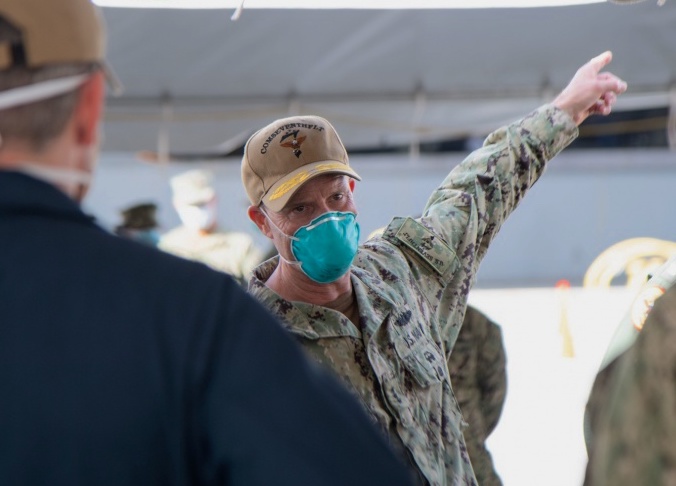
The carrier’s arrival on Guam set off the primary conflict that prompted Crozier’s letter to Navy leadership warning about the risk to his sailors.
Crozier, the senior medical officer, the carrier air wing commander and other leaders in the strike group pushed for U.S. 7th Fleet Commander Vice Adm. Bill Merz to find quarantine sites in Guam that aligned with the Centers for Disease Control and Prevention (CDC) guidelines for isolation.
The group pushed for the sailors to be housed in the vacant hotels on the island rather than the spaced-out cots in gyms on the naval base. While some of the crew had been moved to ashore, “a number of factors converged to delay TR Sailors from occupying all available facilities on Guam. Providing food for the number of TR Sailors ashore in isolation and quarantine was a challenge,” reads the report.
“The ship’s leaders were concerned that the temporary open-bay facilities did not meet CDC guidelines. In reaction to the social media posts and out of concern for the living conditions ashore, the TR CO prevented sailors from leaving the ship until a guarantee of sufficient meal service was available.”
There was also confusion over the testing requirements to move sailors from the ship to shore.
“This contributed to the delay in getting potentially non-infected crewmembers off the ship into available facilities on Guam, that, although not ideal and not meeting the strict CDC guidance of single room and single bathroom per individual, did offer better protection from infection than the ship’s berthing compartments and messing facilities,” reads the report.
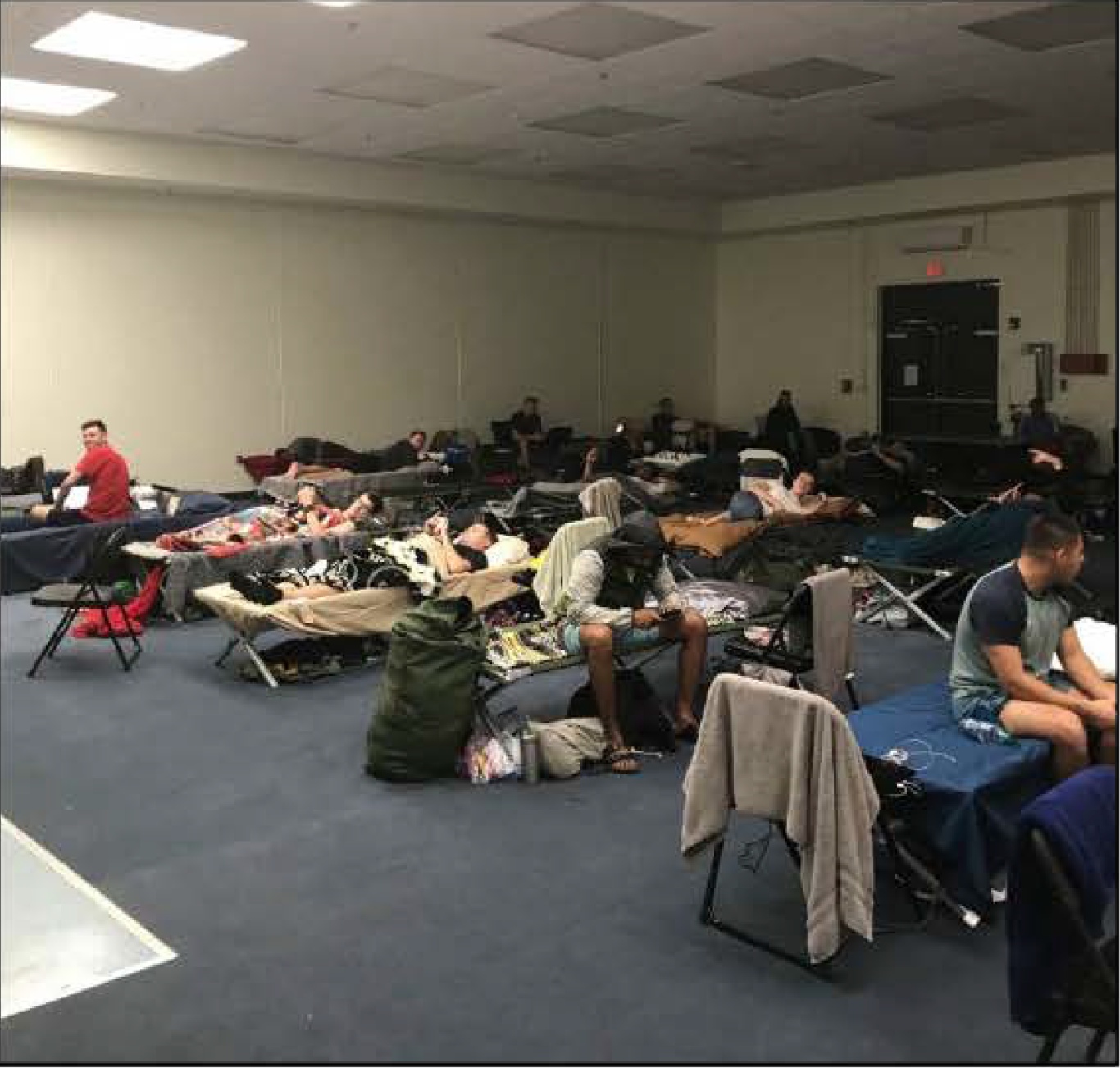
Guam was facing its own health emergency, and Navy leadership at the time saw the political challenge of convincing Guam’s governor to quarantine sailors off the naval base. The medical staff aboard the carrier made a case to Crozier
“[Merz] prioritized other [courses of action] over the Guam hotel room option at this point due to the conditions under which the Navy had obtained permission to bring TR into the naval base – the Navy had agreed that sailors would remain on the naval base, and that the Navy would not ask for help from the Government of Guam, as Guam was itself in a state of public health emergency,” reads the report.
On March 28, Merz told Baker and the carrier’s leadership to plan to airlift TR crew to Okinawa, where there were more military facilities to house the infected sailors.
According to the investigation, Merz was working with III Marine Expeditionary Force to find 5,000 CDC-compliant beds to house the sailors. Crozier, unaware of the work between 7th Fleet and III MEF, called the commander of Fleet Activities Okinawa, who told Crozier there weren’t 5,000 beds on the island.
“As a result of this lack of clarity in the Okinawa plan, further friction developed between” leadership on the carrier and at 7th Fleet, reads the report.
“[Crozier] made no effort to confirm the status of the Okinawa rooms with anyone in his chain of command. By the ship’s fourth day in Guam, the TR CO and warfare commanders began to believe there were no plans to move 4,000 crew off the ship into isolation and quarantine in CDC compliant facilities.”
Crozier and the strike group’s warfare commanders “grew increasingly frustrated with the proposed way ahead and wanted [Baker] to address what they believed was a crisis by demanding the crew be offloaded as soon as possible to hotel rooms in Guam,” reads the report.
“According to [Baker], the feedback he received was that the Guam hotels were really not an option because [Modly] had said publicly that the U.S. Government would not use the resources of Guam.”
Based on the response from Baker, Crozier drafted his memo to Navy leadership in the Pacific in a last plea for assistance.
“On March 30, Crozier sent an email to ‘Fellow Naval Aviators’ with a memo requesting ‘all available resources to find NAVADMIN and CDC compliant quarantine rooms for my entire crew as soon as possible.’ The San Francisco Chronicle published this memo online the next day,” reads the report.
Merz, a career submariner, was not included in the list of recipients.
However, at the same time Crozier’s memo was published widely, officials had begun negotiating with civilian leaders on Guam to make the hotel rooms available.
“According to [Baker], the memo’s publication created tension between with the Navy and the Government of Guam, potentially complicating negotiations for the ship’s crew to occupy hotels on the island,” reads the report.
Crozier told investigators he was unaware of the plan when he sent his message.
“He did not ensure he had a full understanding of the facts before sending the email or include key members of his chain of command in the email chain. The letter did not have a positive effect on the plan in place and indeed placed undue pressure on the Governor of Guam at the time she was finalizing plans to open hotels,” Gilday wrote.
After the memo
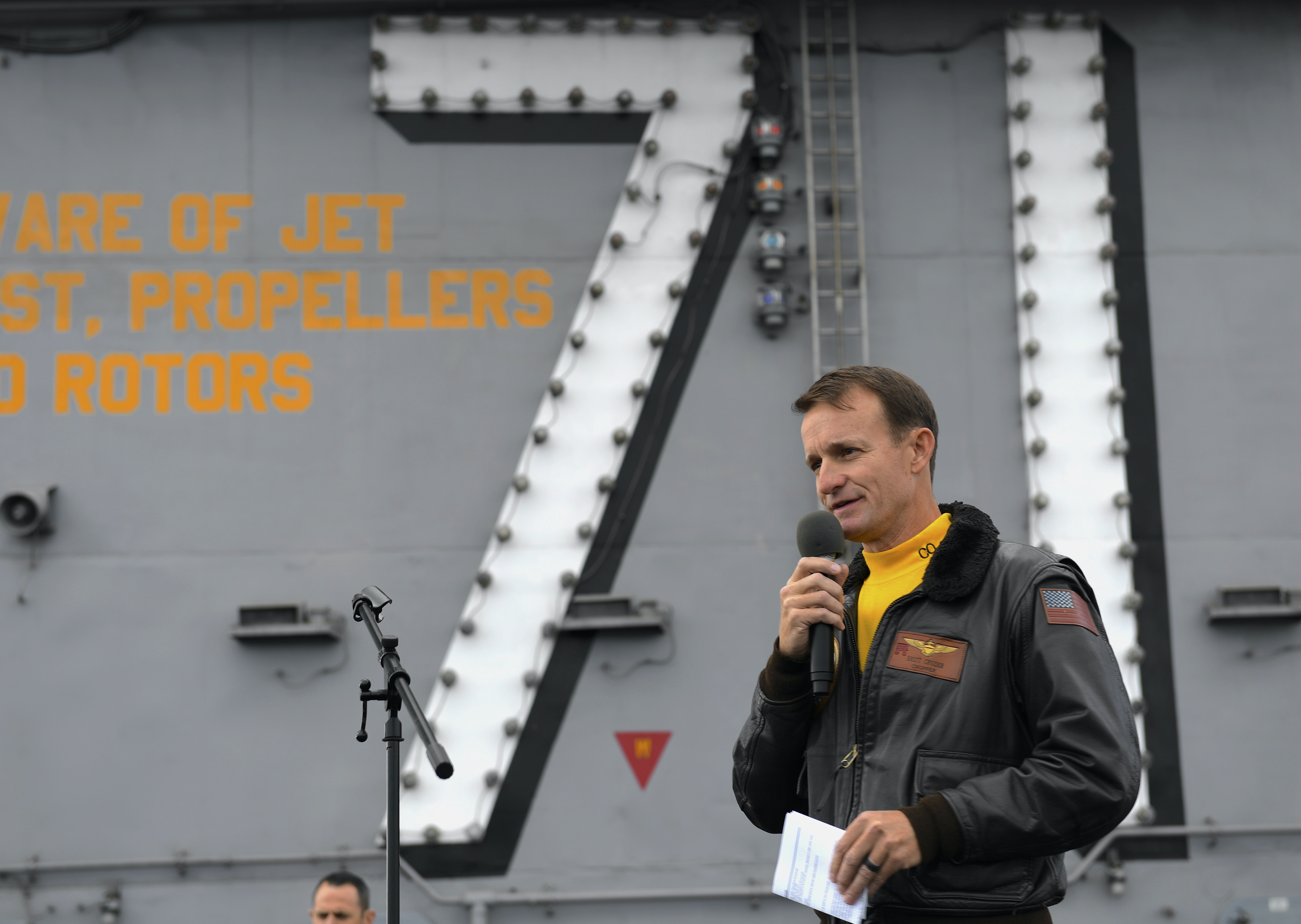
While Crozier’s message grabbed headlines, Burke concluded that the publication of the message didn’t accelerate getting sailors off the ship. He concluded, along with Gilday’s endorsement, that Crozier and the leaders on the carrier focused their efforts on the ideal outcome for crew comfort and, by doing so, ultimately caused a higher rate of infection among the crew.
“It is difficult to comprehend how the entire command team, driven by an overwhelming concern for the crew’s safety, took little to no action within their own span of control to improve the crew’s safety. The leadership team was missing in action when it came to leveraging available temporary facilities, organizing and then leading a quick and effective egress from the ship. Not recognizing their missed leadership opportunity, it became necessary, in their minds, to further disregard good order and discipline by ‘jumping the chain’ [of command] with an urgent plea,” reads Burke’s conclusion.
“After 40 plus days to reflect on their actions since arrival on Guam, many of the principal members of the ship and strike group leadership team maintain that their actions to protect the crew were proper, and that the actions requested would not have occurred without the former commanding officer’s email and letter.”
The investigation didn’t fault Merz or Aquilino for their response to the outbreak. In addition to Crozier’s removal of command and Baker’s stalled promotion, Gilday recommended Crozier, the air wing commander and senior medical officer face an administrative review at Aquilino’s discretion.
“This was all about what Crozier failed to do within his span of control,” Gilday told reporters.
“I looked at the span of control of the commander of the Pacific Fleet. I looked at the span of control of the commander of 7th fleet. I did not see those problems.”
While the Navy investigation is concluded, lawmakers indicated there could be an additional look into the circumstances around the outbreak.
“Everyone up and down the chain of command had a role to play in the inadequate response – including then-Acting Secretary of the Navy Modly. The Department’s civilian leadership portrayed Capt. Crozier’s decision-making aboard the [Theodore] Roosevelt as the critical weakness in the Navy’s response, but the truth is that civilian leadership was also to blame,” reads a statement from Rep. Adam Smith (D-Wash.), chairman of the House Armed Services Committee.
“In order to better understand the full range of mistakes that were made throughout the entire chain of command, the House Armed Services Committee has launched an investigation into the COVID-19 outbreak aboard the [Theodore] Roosevelt.”





